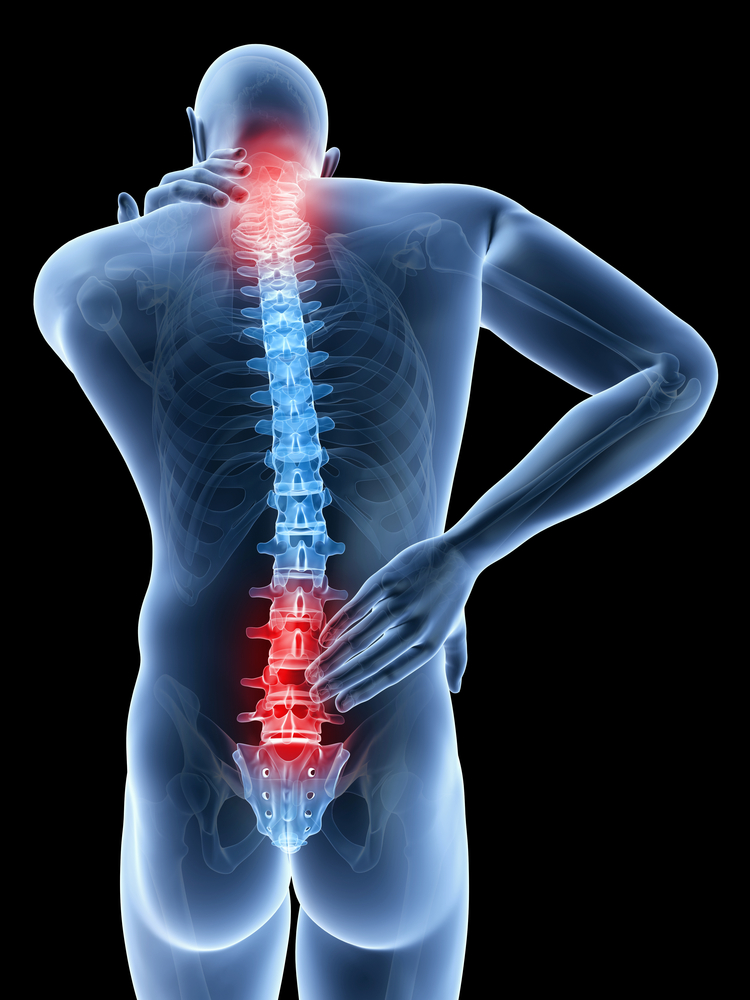What is spondylolysis?
Spondylolysis is a spine condition that can be painful. It's a problem with the connection between vertebrae — the bones that make up the spine. Having spondylolysis can lead to small stress fractures or cracks, often after repeated injuries during sports.
Spondylolysis is also known as a 'pars defect' because it affects a tiny spinal bone called the pars interarticularis.
Is spondylolysis the same as spondylolisthesis?
Spondylolysis and spondylolisthesis are related but not the same.
Spine Cracks With Movement

A vertebral compression fracture (VCF) is a collapse or breakdown in a bone in your spine. Compression fractures happen when there is too much pressure on the vertebra. VCFs most often occur in the thoracic (middle) and lumbar (lower) areas of your spine. Fractures may be mild to severe. Another possible cause of the popping or grinding sound is when two neighboring bones of the spine (vertebrae) lie too close to each other and rub against themselves when there is movement. Depending on the cause, spinal crepitus can be: Crepitus by cavitation: 1, 2 An audible pop or crack, which may occur during normal movement or when the spine is moved near its end range of motion. Cavitation can occur naturally with exercise or motion and can be induced by a health professional, such as a chiropractor, or osteopathic physician. Muscles are not only for movement, but they are also important for providing protection and stability to the bones and joints that lay underneath them. Weak neck muscles increase the amount of instability in the cervical spine, which might trigger the desire to crack the spinal joints.
- Spondylolisthesis is when one vertebra slips out of place over the vertebra below.
- Spondylolysis is a common cause of spondylolisthesis, because the crack in the vertebra may cause the bone to slip.
How common is spondylolysis?
Spondylolysis affects about 3% to 7% of Americans. It’s common in kids and teens, especially those who participate in sports such as gymnastics or football. Overstretching or overextending the spine, but not inflexion (bending inward) can lead to small cracks in the vertebrae.
What causes spondylolysis?
If you have spondylolysis, you typically have a weakness in a section of the vertebra called the pars interarticularis. This thin piece of bone connects the facet joints, which link the vertebrae directly above and below to form a working unit that permits movement of the spine. The cracks are often called pars fractures.

While we don’t know exactly why the weakness occurs, your genes might play a role. You may be born with thin vertebrae, which puts you at higher risk for pars fractures. Repetitive trauma to the lower back — for example, injuring yourself over and over through sports or other activities — can also weaken the pars interarticularis.
What are the symptoms of spondylolysis?
It’s possible to have spondylolysis and not even feel any symptoms. If you do experience symptoms, low back pain is the most common. The pain often:
- Spreads across the lower back.
- Feels like a muscle strain.
- Is made worse with extension
Symptoms often appear during teen growth spurts. The typical age of diagnoses is 15 to 16 years (younger in females). Android emulator for big sur.
What is spondylolysis?

Spondylolysis is a spine condition that can be painful. It's a problem with the connection between vertebrae — the bones that make up the spine. Having spondylolysis can lead to small stress fractures or cracks, often after repeated injuries during sports.
Spine Cracks With Movement Muscles
Spondylolysis is also known as a 'pars defect' because it affects a tiny spinal bone called the pars interarticularis.
Is spondylolysis the same as spondylolisthesis?
Spondylolysis and spondylolisthesis are related but not the same. Download mac os el capitan installer.
- Spondylolisthesis is when one vertebra slips out of place over the vertebra below.
- Spondylolysis is a common cause of spondylolisthesis, because the crack in the vertebra may cause the bone to slip.

How common is spondylolysis?
Spondylolysis affects about 3% to 7% of Americans. It’s common in kids and teens, especially those who participate in sports such as gymnastics or football. Mac iphone simulator. Overstretching or overextending the spine, but not inflexion (bending inward) can lead to small cracks in the vertebrae.
What causes spondylolysis?
If you have spondylolysis, you typically have a weakness in a section of the vertebra called the pars interarticularis. This thin piece of bone connects the facet joints, which link the vertebrae directly above and below to form a working unit that permits movement of the spine. The cracks are often called pars fractures.
While we don’t know exactly why the weakness occurs, your genes might play a role. You may be born with thin vertebrae, which puts you at higher risk for pars fractures. Repetitive trauma to the lower back — for example, injuring yourself over and over through sports or other activities — can also weaken the pars interarticularis.
What are the symptoms of spondylolysis?
It’s possible to have spondylolysis and not even feel any symptoms. If you do experience symptoms, low back pain is the most common. The pain often:
- Spreads across the lower back.
- Feels like a muscle strain.
- Is made worse with extension
Symptoms often appear during teen growth spurts. The typical age of diagnoses is 15 to 16 years (younger in females).
Comments are closed.